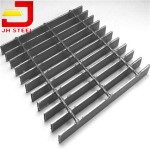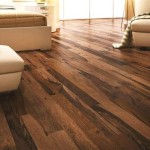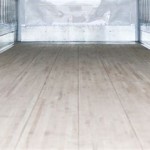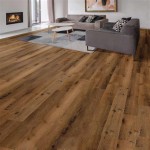Underlay for Vinyl Flooring on Concrete: Ensuring Longevity and Comfort
Installing vinyl flooring directly on concrete is a common practice, but it often neglects a critical component: underlayment. A properly chosen underlayment provides a multitude of benefits, enhancing the performance, longevity, and overall comfort of the vinyl flooring installation. Selecting the right underlayment for a concrete subfloor requires careful consideration of various factors, including moisture levels, subfloor imperfections, and desired performance characteristics.
Concrete, while a durable and stable base, presents specific challenges that make underlayment essential. Its inherent porosity allows moisture to permeate from the ground, potentially damaging the vinyl flooring and promoting mold or mildew growth. Concrete surfaces are also prone to imperfections such as cracks, unevenness, and surface irregularities, which can telegraph through the vinyl flooring, affecting its appearance and lifespan. Understanding these challenges is paramount in selecting an appropriate underlayment solution.
This article will explore the significance of underlayment for vinyl flooring installed on concrete, highlighting the key benefits, different types of underlayment available, factors to consider when choosing an underlayment, and proper installation techniques. Addressing each of these areas will provide a comprehensive understanding of how to maximize the performance and longevity of vinyl flooring over a concrete subfloor.
Key Benefits of Underlayment Under Vinyl Flooring on Concrete
The inclusion of underlayment beneath vinyl flooring laid on concrete offers numerous advantages that contribute to a superior flooring system. These benefits extend beyond mere aesthetics, influencing the floor's durability, comfort, and overall performance.
Moisture Barrier: Concrete is porous and can draw moisture from the ground, especially in basements or on-grade slabs. This moisture can lead to issues such as mold, mildew, and adhesive failure, ultimately damaging the vinyl flooring. Underlayment acts as a crucial moisture barrier, preventing moisture migration and protecting the vinyl from these adverse effects. Underlayments specifically designed with a moisture barrier are essential for installations on concrete known to have high moisture levels. These barriers are typically composed of polyethylene or other waterproof materials that effectively block moisture transmission.
Sound Insulation: Concrete, while dense, can transmit sound easily. Foot traffic, furniture movement, and other noises can be amplified without proper sound insulation. Underlayment significantly reduces sound transmission between floors, creating a quieter and more comfortable environment. This is particularly important in multi-story buildings, apartments, or homes with shared walls. The sound insulation capabilities of underlayment are typically measured by the Sound Transmission Class (STC) and Impact Insulation Class (IIC) ratings. Higher ratings indicate better sound-dampening performance.
Cushioning and Comfort: Vinyl flooring, while resilient, can feel hard and unforgiving underfoot when installed directly on concrete. Underlayment provides a cushioning layer that enhances comfort and reduces fatigue, especially in areas where prolonged standing is common. This added cushioning also contributes to a more luxurious feel underfoot. The thickness and density of the underlayment directly impact the level of cushioning provided. Softer, thicker underlayments generally offer greater comfort.
Subfloor Imperfection Absorption: Concrete subfloors often have minor imperfections such as cracks, unevenness, and surface irregularities. These imperfections can telegraph through the vinyl flooring, creating an uneven and unsightly surface. Underlayment helps to bridge these imperfections, providing a smoother and more even surface for the vinyl flooring. This also prevents the vinyl from flexing and cracking due to underlying irregularities. Thicker underlayments with higher densities are more effective at leveling minor subfloor imperfections.
Thermal Insulation: Concrete can be cold, especially in colder climates. Underlayment provides a layer of thermal insulation, helping to warm the floor and reduce energy costs. This is particularly beneficial in basements or rooms with concrete slabs directly on the ground. The R-value of the underlayment indicates its thermal resistance, with higher R-values indicating better insulation performance.
Types of Underlayment for Vinyl Flooring on Concrete
The market offers a variety of underlayment options designed for vinyl flooring installation on concrete, each with its unique characteristics and suitability for different applications. Understanding the properties of these different types is crucial for making an informed decision.
Foam Underlayment: Foam underlayment is a popular choice due to its affordability and versatility. It is available in various densities and thicknesses, providing cushioning, sound insulation, and moisture resistance. Different types of foam used include polyethylene (PE), polypropylene (PP), and expanded polystyrene (EPS). PE foam is generally less expensive and offers basic cushioning, while PP foam is more durable and provides better sound insulation. EPS foam is often used for its thermal insulation properties. While foam underlayment is suitable for many applications, it may not be the best choice for areas with heavy foot traffic or significant subfloor imperfections.
Cork Underlayment: Cork is a natural and sustainable material that offers excellent sound insulation, thermal insulation, and moisture resistance. It is also naturally antimicrobial and resistant to mold and mildew. Cork underlayment is a more premium option compared to foam but provides superior performance and longevity. It is particularly well-suited for areas where sound insulation is a priority, such as apartments or home theaters. Cork's natural resilience also makes it an excellent choice for areas that require good cushioning and support.
Rubber Underlayment: Rubber underlayment is known for its exceptional durability, sound insulation, and shock absorption capabilities. It is often made from recycled rubber, making it an environmentally friendly option. Rubber underlayment is ideal for high-traffic areas, gyms, or commercial settings where durability and sound control are essential. Its dense composition also provides excellent moisture resistance. However, rubber underlayment can be more expensive than other options and may require professional installation.
Combination Underlayment: Some underlayments combine different materials to offer a blend of benefits. For example, some underlayments may consist of a foam core laminated with a moisture barrier or a cork layer bonded to a rubber backing. These combination underlayments aim to provide comprehensive performance, addressing multiple concerns such as moisture, sound, cushioning, and subfloor imperfections. These are generally good options but it is essential to assess the layers that make up the underlayment and if they match your needs.
Self-Leveling Underlayment: While not strictly an underlayment in the traditional sense, self-leveling compounds are often used on concrete subfloors to create a perfectly level and smooth surface before installing vinyl flooring. These compounds are cement-based mixtures that are poured onto the subfloor and allowed to flow and self-level, filling in cracks and unevenness. Once cured, they provide an ideal surface for installing any type of flooring, including vinyl. Self-leveling compounds are essential for situations where the concrete subfloor is significantly uneven or damaged.
Factors to Consider When Choosing Underlayment
Selecting the appropriate underlayment for vinyl flooring on concrete requires careful consideration of several factors to ensure optimal performance and longevity. These factors relate to the condition of the subfloor, the intended use of the space, and specific performance requirements.
Moisture Levels: Before installing any flooring over concrete, it is crucial to test the moisture levels in the slab. Excessive moisture can lead to mold growth, adhesive failure, and damage to the flooring. Moisture testing can be done using a calcium chloride test or a relative humidity probe. If moisture levels are high, a moisture barrier underlayment is essential. Consider using a liquid-applied moisture barrier if moisture issues are severe. These barriers are rolled or brushed onto the concrete surface and create a waterproof membrane that prevents moisture from migrating to the flooring.
Subfloor Condition: Inspect the concrete subfloor for cracks, unevenness, and surface irregularities. Minor imperfections can be addressed with a thicker underlayment, while significant damage may require repair or the use of a self-leveling compound. Ensure that the subfloor is clean and free of debris before installing the underlayment. Any dirt, dust, or loose particles can interfere with the adhesion of the underlayment or vinyl flooring.
Intended Use: Consider the intended use of the space and the level of foot traffic it will receive. High-traffic areas require a more durable and resilient underlayment than low-traffic areas. Areas where sound insulation is important, such as apartments or bedrooms, call for underlayments with high STC and IIC ratings. Areas with potential for spills or moisture exposure may benefit from underlayments with superior moisture resistance.
Vinyl Flooring Type: The type of vinyl flooring being installed can also influence the choice of underlayment. Some vinyl flooring products may have specific underlayment requirements or recommendations from the manufacturer. Always consult the manufacturer's instructions before selecting an underlayment. For example, some luxury vinyl plank (LVP) products may have a built-in underlayment, eliminating the need for a separate underlayment. In other cases, a specific type of underlayment may be required to maintain the warranty.
Budget: Underlayment prices can vary significantly depending on the material, thickness, and performance characteristics. Establish a budget beforehand and choose an underlayment that provides the best combination of performance and value within that budget. While it may be tempting to opt for the cheapest option, investing in a quality underlayment can save money in the long run by preventing costly repairs and replacements.
Installation Method: The installation method of the vinyl flooring (e.g., glue-down, click-lock, peel-and-stick) can also affect the choice of underlayment. Certain underlayments may be more suitable for specific installation methods. For example, a thicker, more stable underlayment may be required for click-lock vinyl flooring to prevent movement and ensure proper locking of the planks or tiles. Glue-down installations may require an underlayment with a textured surface to promote better adhesion.
By carefully considering these factors, homeowners and contractors can select the most appropriate underlayment for their vinyl flooring installation on concrete, ensuring optimal performance, longevity, and comfort.

Underlayment For Vinyl Floors 2 Big Questions Answered Pliteq Ap

Vinyl Flooring Does It Need Underlayment Word Of Mouth Floors

Underlayment For Vinyl Flooring Best Options Home Pros

How To Prepare A Concrete Floor For Vinyl Flooring Parrys

What To Know Before Flooring Underlayment

Do You Need Underlayment For Vinyl Flooring Levelfinish

The Best Underlayment For Vinyl Flooring

Underlayment For Vinyl Flooring The Only Guide You Need Floor City

Best Underlayment For Laminate Flooring On Concrete

The Advantages Of Poly Foam Underlay Blog Floorsave
Related Posts








